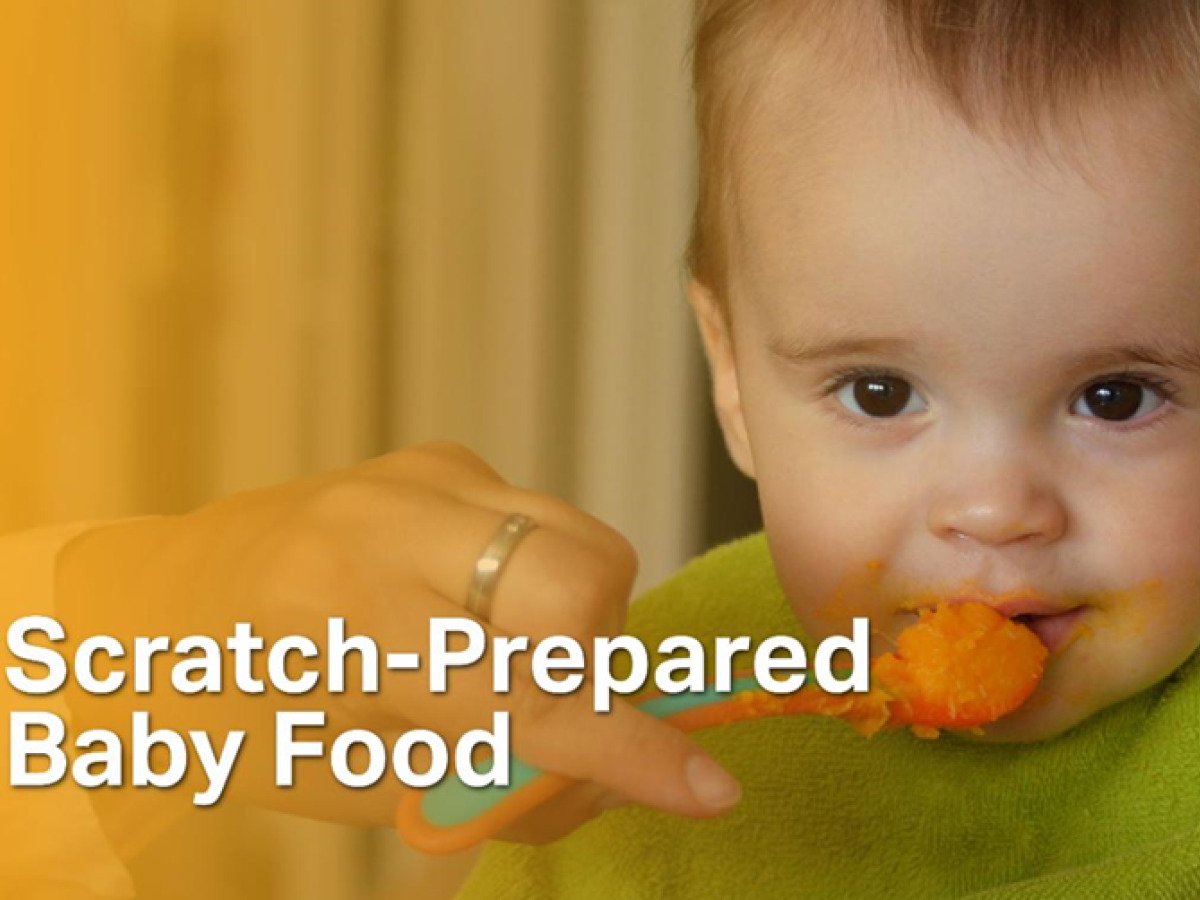Scratch-Prepared Baby Food
Institute of Child Nutrition (ICN)
October 8, 2024

Discover the ease of preparing scratch-prepared or homemade baby food without culinary expertise or a commercial kitchen. Incorporating scratch-prepared baby foods into your child care program can be manageable and rewarding. The Institute of Child Nutrition’s Mealtime Memo will guide you through the process, emphasizing the benefits and offering practical tips for implementation.
Benefits
Making scratch-prepared baby food has many advantages:
- Cost-effective: It may be less expensive than buying baby food.
- Nutrition: You can manage ingredients like added sugar, fat, and salt.
- Variety: Choose from a variety of foods to make into baby food, including locally grown and seasonal foods.
- Exposure to more flavors: Babies enjoy infant-friendly versions of foods other children eat, which may help them become more adventurous eaters.
- Easy to prepare: The process can be reasonably simple.
Equipment
Expensive equipment is not necessary to make scratch-prepared baby food. You can use the tools you may already have in your kitchen, such as:
- Potato masher or fork
- Blender, food processor, or hand-held mixer
- Baby food grinder
Foods to Use
Most foods can be made into baby food. Try to include fruits and vegetables in each color of the rainbow. You can use fresh, frozen, or canned fruits and vegetables. Also, offer meats and meat alternates that are good protein sources, such as chicken, fish, lean meat, eggs, cottage cheese, beans, peas, lentils, nuts, peanut and nut butter, tofu, yogurt, and soy yogurt.
To control for added sugar, salt, and fat, check the ingredient labels and choose:
- Canned fruit in water or juice
- Canned vegetables with no added salt
- Frozen fruits and vegetables without added sauces or syrups
- Natural or “no sugar added” peanut or nut butter
Foods to Avoid
Honey
Honey may contain bacteria that could cause infant botulism and can be life threatening. Do not feed honey or any processed foods that contain honey (e.g., honey graham crackers) to infants under 12 months old.
- Beets
- Broccoli
- Cabbage
- Carrots
- Collard greens
- Green beans
- Lettuce
- Spinach
- Squash
- Turnips
Avoid offering high-nitrate vegetables to infants until after the age of six months—which is when experts recommend introducing solid foods. Babies under six months of age cannot digest nitrates. After six months of age, babies’ stomach acids have further developed, and they can process nitrates.
Store-bought vegetables (canned and frozen) are generally safer to make into baby food. However, it is safest to avoid high-nitrate foods and introduce them when a child is at least six months old.
Steps to Scratch Prepared Baby Food
Keep the following tips in mind when making scratch-prepared baby food:
- Wash your hands, utensils, and surfaces before and after making baby food.
- If you cook the same food for the rest of the children, remove the infants’ portions before adding salt and seasonings.
Fruits and Vegetables
- Wash, peel, and slice fruits and vegetables. Remove stems, pits, or seeds.
- Drain canned fruits and vegetables to decrease the amount of sugar or salt.
- Cook food until it is tender. Microwave, steam, or boil dried, fresh, or frozen fruits and vegetables in a small amount of water to retain vitamins and minerals.
- Soft, ripe, fresh produce (e.g., avocados, bananas, kiwi, peaches, or pears) and most canned fruits and vegetables may not need to be cooked before they are mashed or puréed.
- Mash food with a fork or potato masher or puree in a blender, food processor, or hand-held mixer to a soft texture.
Meats
- Cook meats and poultry (braise, stew, or poach) completely to the appropriate temperatures.
- Remove fat, skin, and bones.
- Cut into small pieces for easy pureeing, mashing, or chopping.
- Do not add salt, oil, butter, margarine, or gravy.
Meat Alternates
- Eggs: Cook until the yolk and whites are firm or hard-boiled. Then, mash with a fork.
- Cottage cheese: You may need to blend cottage cheese depending on the infant’s developmental readiness and the size of the curd.
- Beans, peas, and lentils: Rinse canned beans, peas, and lentils to decrease salt. Cook until tender, then puree or mash.
Storing Baby Food
If preparing infant food in batches, you can freeze the food in individual portions.
- Pour baby food into clean ice cube tray sections, cover, and freeze.
- Once frozen, transfer food cubes into clean, airtight, and freezer safe food containers or freezer bags.
- Label the type of food and the date.
- Use the frozen baby food within 1-2 months.
- Take out the desired number of cubes you want to serve. Thaw them in the refrigerator or a microwave on a defrost setting.
- Reheat refrigerated or frozen baby food to at least 165 °F, and then allow to cool before feeding.
For more information read ICN’s October Mealtime Memo.
